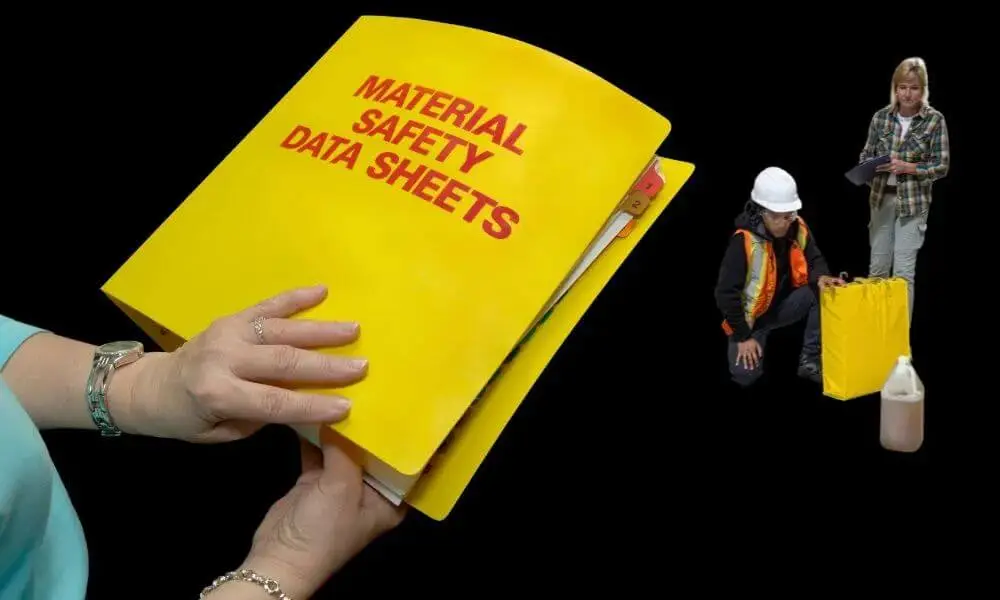What is a Material Safety Data Sheet? The Material Safety Data Sheet (MSDS), a critical occupational health and safety tool, is a technical guide that shares details about a regulated product that fits the danger criteria in the Controlled Products Regulations. It helps us understand how to use this product safely. As an essential document in the chemical industry, MSDS provides detailed information about various substances, helping to ensure a safer work environment.
The Importance of a Material Safety Data Sheet
An MSDS is not just another document but the cornerstone of chemical safety. It communicates hazards, giving all stakeholders information about substances they might encounter. Ensuring correct usage, storage, and emergency responses, MSDS reduces risks associated with chemical handling. Let’s dive into its history to understand it better.
The History of MSDS
The origins of the Material Safety Data Sheet (MSDS) can be traced back to the Occupational Safety and Health Act (OSHA) of 1970 in the United States. This legislation required employers to provide a safe workplace, leading to the development of MSDS as an information bridge between chemical manufacturers and users.
What Does an MSDS Include?
An MSDS is divided into various sections, each serving a specific purpose:
Section A: Identification Information
This section includes the product’s name, manufacturer’s details, and emergency contact information.
Section B: Hazard Identification
Here, you’ll find details about the potential hazards of the substance.
Section C: Composition of Substances
It lists the substance’s ingredients, emphasizing hazardous components.
Section D: First Aid Measures
These are recommended actions in case of exposure.
Section E: Fire-Fighting Measures
This offers guidance on dealing with fires involving the substance.
Section F: Accidental Release Measures
Here, you’ll find instructions for containment and cleaning spills or leaks.
Section G: Handling and Storage
This details how to handle and store the material safely.
Section H: Exposure Controls/Personal Protection
Protective measures and control parameters are outlined here.
Section I: Physical and Chemical Properties
This elaborates on the substance’s characteristics.
Section J: Stability and Reactivity
Information on the substance’s stability and possible hazardous reactions is provided.
Who Uses MSDS and Why?
MSDS documents are essential for anyone involved in the handling, storing, or transporting of chemicals. From manufacturers and suppliers to emergency responders and waste disposal personnel, many rely on MSDS to understand the substances they encounter.
Interpreting an MSDS
While an MSDS provides comprehensive information, its usefulness depends on accurate interpretation. It’s critical to understand each section and implement recommendations correctly.
Regulatory Framework Surrounding MSDS
Regulations for MSDS vary globally, but the Globally Harmonized System (GHS) has been widely adopted, offering a standard approach to classifying and communicating chemical hazards.
Challenges and Solutions in MSDS Management
Managing MSDS can be challenging, given the sheer volume of substances and their dynamic nature. However, technological advancements are streamlining this process, with digital solutions offering effective MSDS management.
The Future of MSDS
As technology and regulations evolve, we can expect MSDS to become more accessible and standardized, improving safety further in chemical handling industries.
Conclusion: A Critical Tool
An MSDS is a comprehensive guide to a substance’s properties, hazards, protective measures, and emergency procedures. It is a critical tool for handling, storing, or transporting chemicals.
Frequently Asked Questions
1. What is an MSDS?
An MSDS (Material Safety Data Sheet) document provides detailed information about a substance, including its properties, hazards, protective measures, and emergency procedures.
2. Who uses MSDS?
MSDS documents are used by everyone involved in the handling, storing, or transporting of chemicals.
3. How is an MSDS structured?
An MSDS is divided into sections, each providing specific information about a substance.
4. What is the history of MSDS?
MSDS originated from the Occupational Safety and Health Act (OSHA) of 1970 in the United States.
5. What is the future of MSDS?
With technological advancements and evolving regulations, MSDS is expected to become more accessible and standardized.
